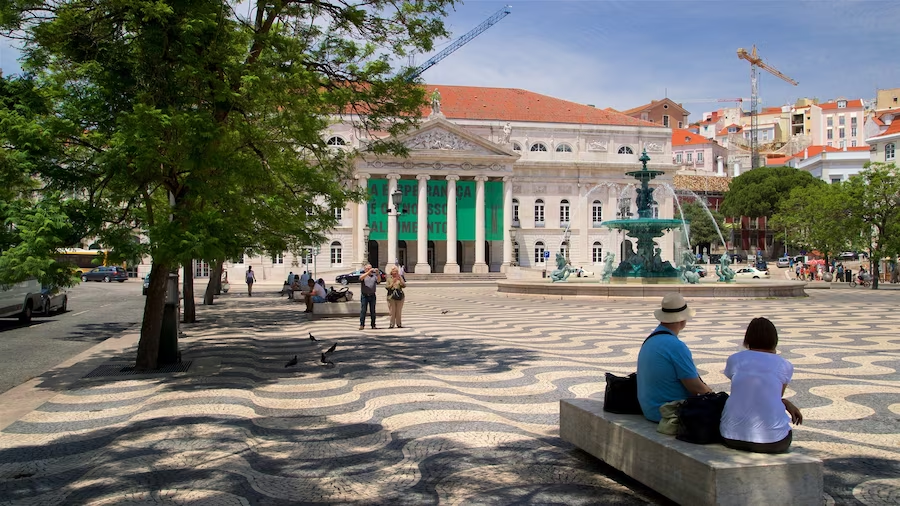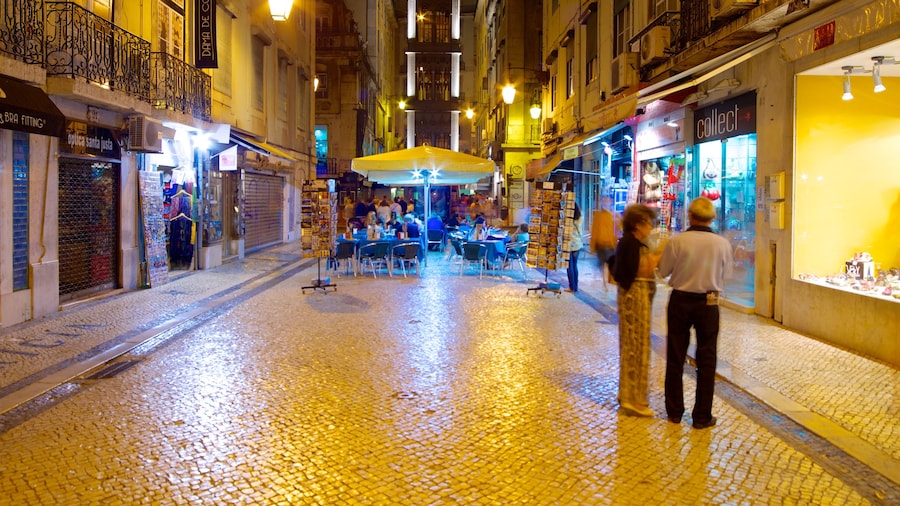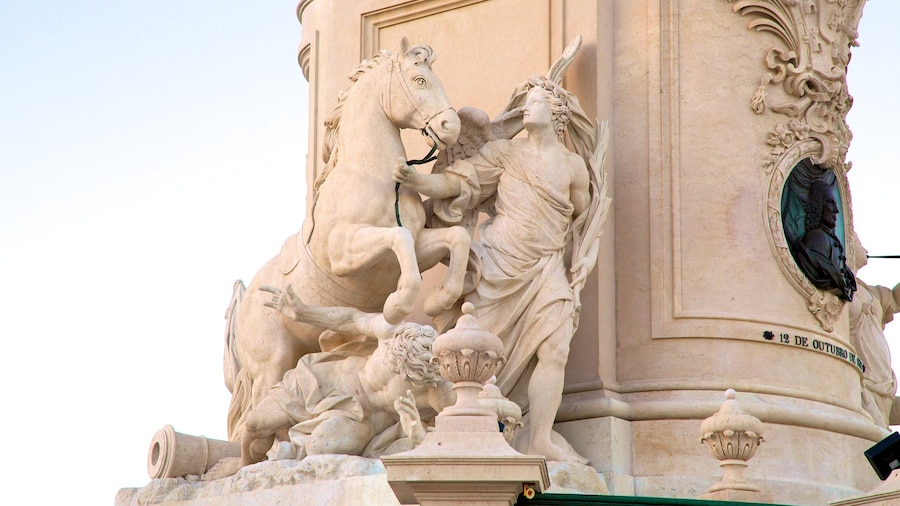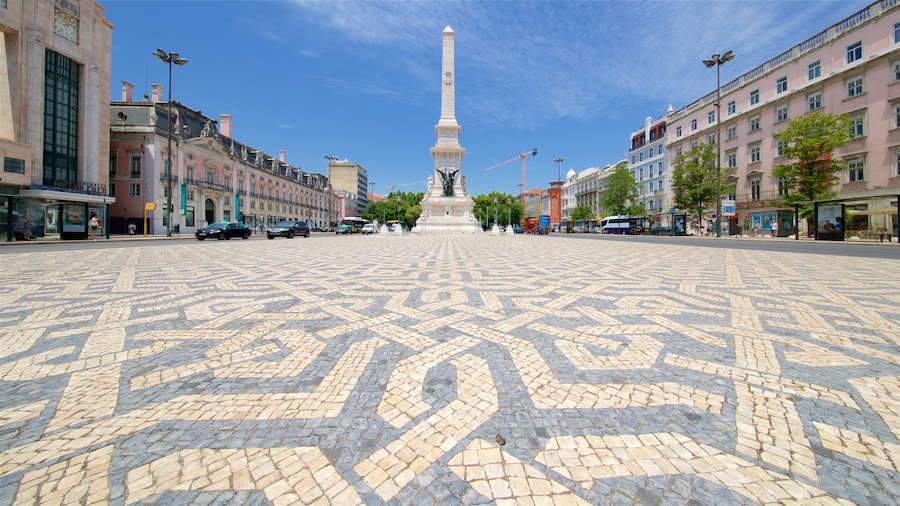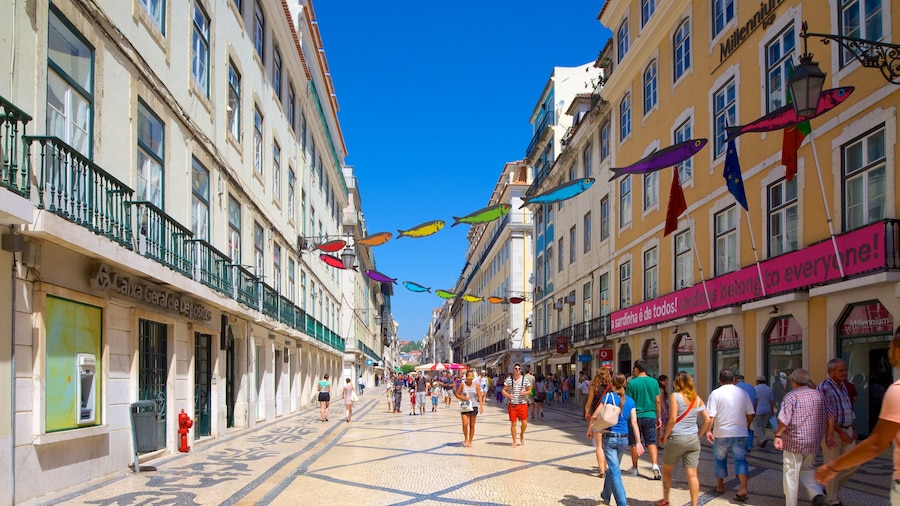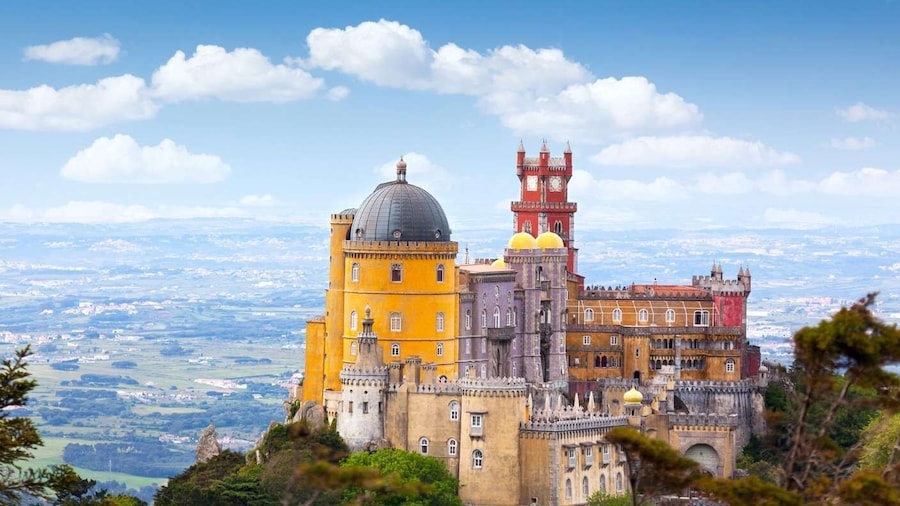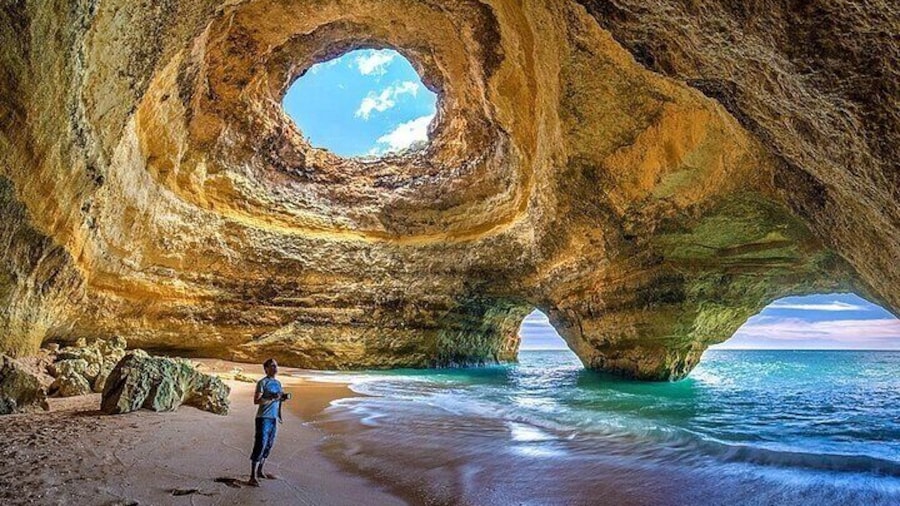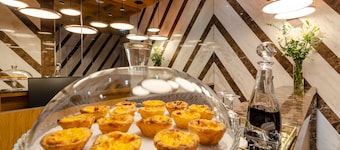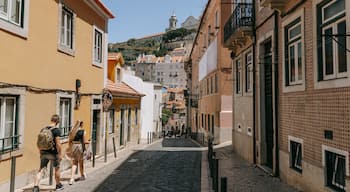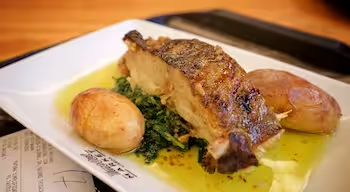Baixa is a sophisticated district of downtown Lisbon. It has picturesque squares, pedestrianised streets and avenues lined with elegant shops, cafés and theatres.
History
Baixa ‘Pombalina’ takes its name from ‘Marquês de Pombal’, PortugalOpens in a new window’s Secretary of State, who undertook the responsibility of rebuilding Lisbon after the 1755 earthquake. So as not to allow history to repeat itself, Baxia displays some of the first examples of earthquake-resistant construction. In the 20th Century, new developments like banks, hotels, shops and offices replaced older buildings in this area. However, the neighbourhood still retains its traditional charming atmosphere.
Elevador de Santa Justa or Carmo Lift
This iron elevator is decorated in the Neo-Gothic style and was built in 1902 to transport people between the downtown Baixa district and the Bairro Alto and Chiado districts. It stands 45-metres high, and leads to a terrace offering stunning views of the city. Today it is a popular tourist attraction.
Rossio or Dom Pedro IV Square
Rossio is Lisbon’s main square, a lively space known for its beautifully designed mosaic pavements. In the centre of the square are two baroque fountains and a statue of King Pedro IV. The Dona Maria II Theatre, cafés, restaurants and the grand Rossio Train Station line the square. Nearby is one of the city's main pedestrian streets, Rua das Portas de Santo Antão. Here you will find Teatro Politeama, (Lisbon's biggest Broadway-style musicals theatre), Coliseu dos Recreios and Casa do Alentejo, an 1800's building with a beautiful Moorish courtyard at the entrance.
Praça do Comércio or Terreiro do Paço
Praça do Comércio or Terreiro do Paço is Lisbon's biggest square. It faces the river and houses an impressive monument to King José I. Surrounded by arcaded buildings, which hold government offices, historic cafés, restaurants with tables outside, the tourist office this is a great spot for sightseeing or just a spot of lunch. It’s also home to the Museum Lisbon Story Centre, where you can learn about the first settlers, through the Age of Discovery and the Great Earthquake, all the way to the city you see today, designed by Marquês de Pombal.
Rua Augusta Arch
The Praça do Comércio is another classic Portuguese square and home to the Rua Augusta Arch. This is a stone arch was designed as a gateway to the city, specifically to Rua Augusta. A beautiful grand clock can be seen on the side of the arch, facing Rua Augusta. Restored in 2013, the arch has an elevator, which takes you to a viewpoint that offers stunning views over the city. Rua Augusta is also home to MUDE (or the Design and Fashion Museum), which displays innovative international and national design and fashion pieces.
Food and Drinks
You’ll find most of the area’s bars, cafés and restaurants are located in Rossio square, Praça do Comércio, Rua das Portas de Santo Antão and Rua Augusta. Café Nicola is the classic place to taste a strong Portuguese coffee and the tiny Café ‘A Ginjinha’ is the best spot to drink Ginja, a typical liqueur made of cherry.





